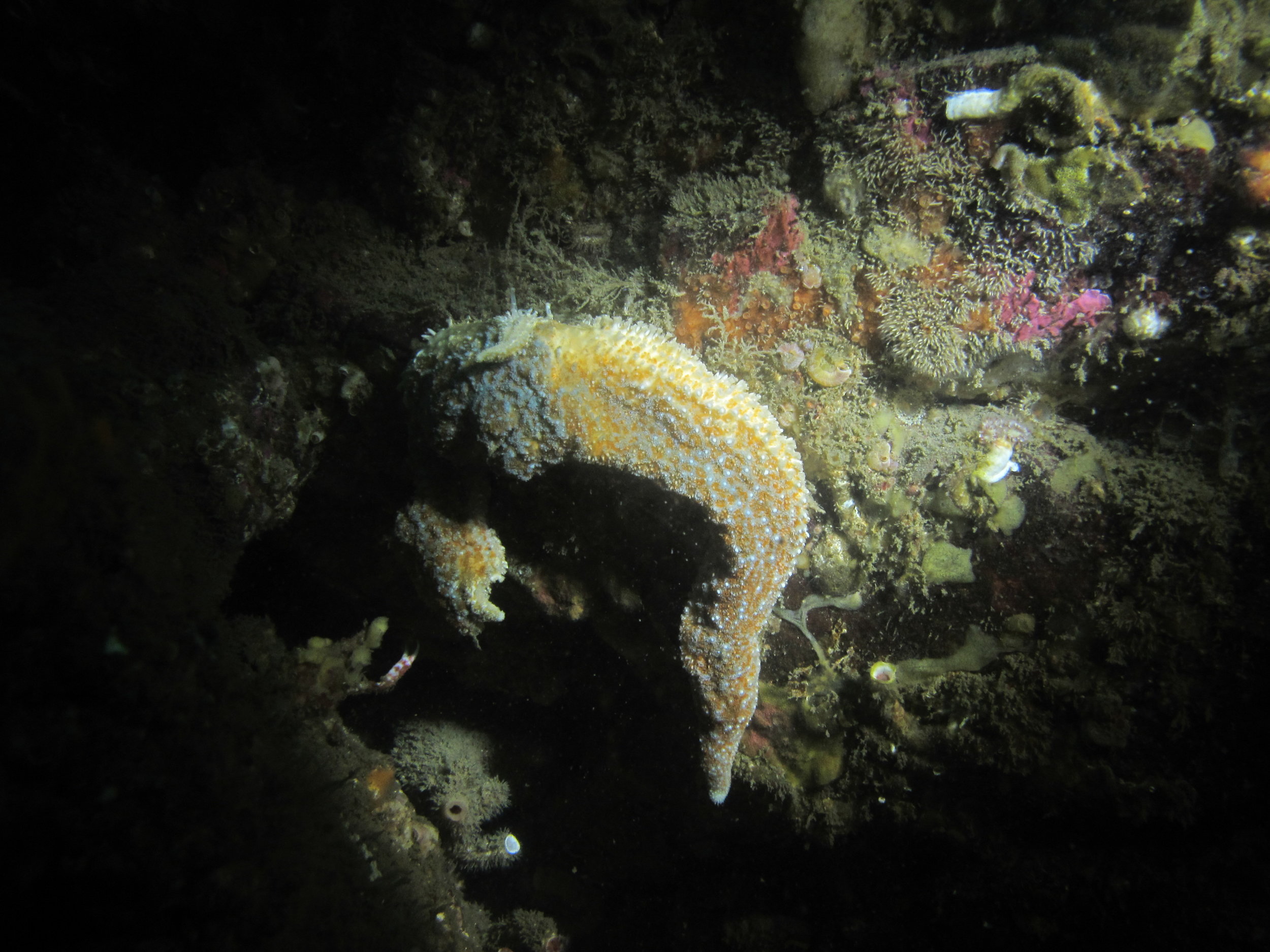Where to buy
The book is available at local independent bookstores and online. ISBN 978-1570619854.
Book reviews
SEA-media.org writes, "In just 148 pages, Benedict and Gaydos have captured the essence of the Salish Sea."
Readers learn about its nature and biology, geology and chemistry, animals, plants, and microorganisms. They learn of its Coast Salish past and its fishing, industrial, recreational, city and town present, and they learn of peoples’ place in its ecosystem. As beauty and perspective and appreciation flow off the pages into the minds of readers, a key objective of the authors is achieved: to connect people with their home.
The Vancouver Sun praised the book for being a "Richly-illustrated book [that] provides insight into the wonders of area."
The Salish Sea is a feast for the eyes, a high-quality publishing effort rich in glossy colour photos and fascinating biological information that is likely to surprise even someone well-versed in our marine waters.
Seattle Magazine featured the book in their March 2015 issue:
The new book The Salish Sea: Jewel of the Pacific Northwest (Sasquatch Books, $24.95) looks at these local waters through a scientific lens, illustrating the region’s unique geology (thanks to glaciers, plate tectonics and volcanoes) and vibrant marine ecology. Written by biologist Audrey DeLella Benedict with Joseph K. Gaydos, chief scientist for the SeaDoc Society (an Orcas Island–based conservation group focused on the Salish Sea), the book pairs bright, bold, photographs with fascinating facts about local sea creatures. (Did you know that the Salish Sea is home to the world’s largest species of barnacle, octopus and burrowing clam?)
Cascadia Weekly writes:
With every page studded with stunning photographs, this book is perfect for simply curling up and looking at the pictures. Bonus that the informative text by Audrey DeLella Benedict is parsed out in easy-to-ingest sections, science made interesting and relevant. Zoology, botany, past and present geology, anthropology, and issues related to the region’s economy are covered, with the emphasis always on species interdependency and teaching about the importance of keeping this ecosystem healthy for all its inhabitants.
The Bellingham Herald says:
I’ve saved the best for last – the book’s inclusion of nearly 200 color images from more than four dozen photographers, including Art Wolfe and neurologist/underwater photographer Marc Chamberlain. These enhance and inform the text more eloquently than I can describe – they are stunning illustrations of the magical place we call home.
The Islands' Sounder says:
From the icy summit of Mount Baker to mudflats of Fidalgo Bay to giant basking sharks of the deep to the alien-esque egg-yolk jellyfish, “The Salish Sea: Jewel of the Pacific Northwest” reveals a vast world that is hard to comprehend.
Christian Martin writes in Cascadia Weekly,
"Through maps, charts, satellite imagery, nature photography and writing, Benedict and Gaydos concoct an engaging presentation of the natural history of our “jewel of the Pacific Northwest.” Their mantra of “know, connect, protect and restore” is a hopeful way forward in to a challenging future.
Sharon Wooton wrote in the Everett Herald,
The book offers the bizarre and beautiful, alien shapes and streamlined bodies, the invisible and obvious, swimmers and flyers and floaters, endangered and countless, mud flats and forests, orcas and dying sea stars.
The High Country News writes,
Dozens of gorgeous color photographs reveal its intricate beauty, and the book ends with a ringing call to action and a vision for protecting the region. This volume itself is a step toward that goal: All the royalties from its sale will be donated to the Puget Sound-based marine conservation center, the SeaDoc Society.
Photographer Max Waugh writes,
[The book is] an eye-opener for those who think the cold waters of the Pacific Northwest don't house the same level of biodiversity as more well-known areas of the globe... From cover to cover, the volume is filled with bold, bright images showing off the amazing scenery and rich biodiversity of the region.






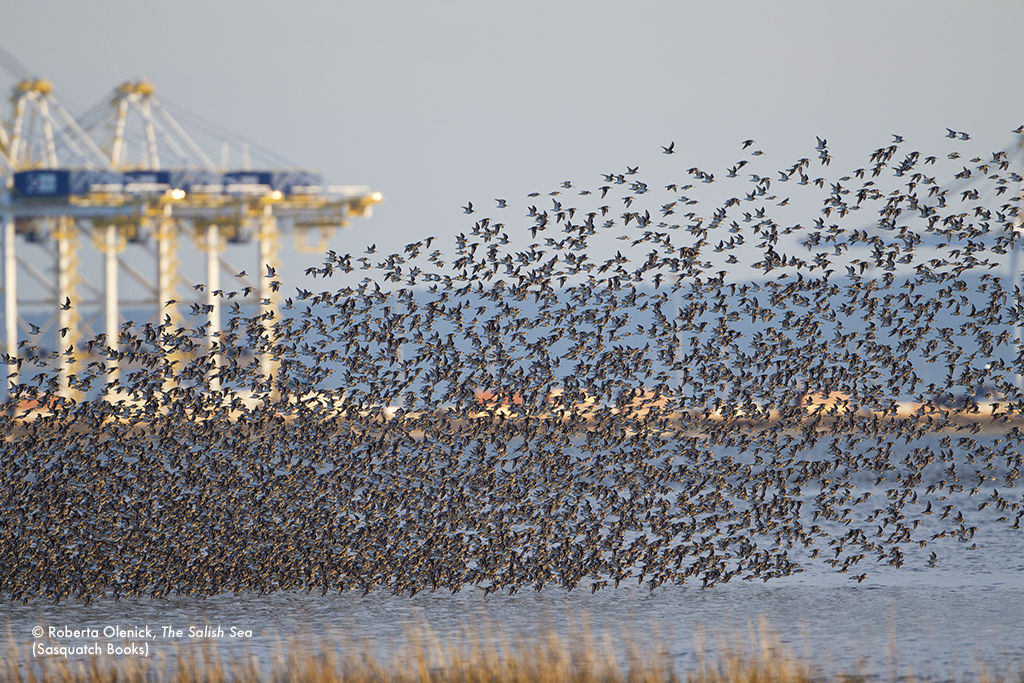








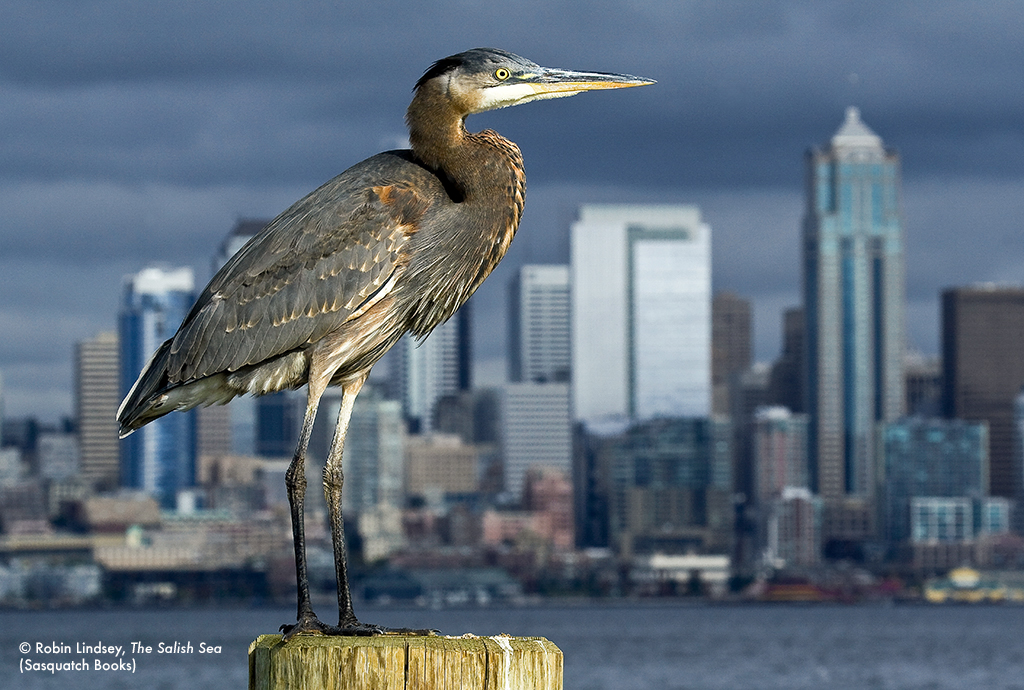















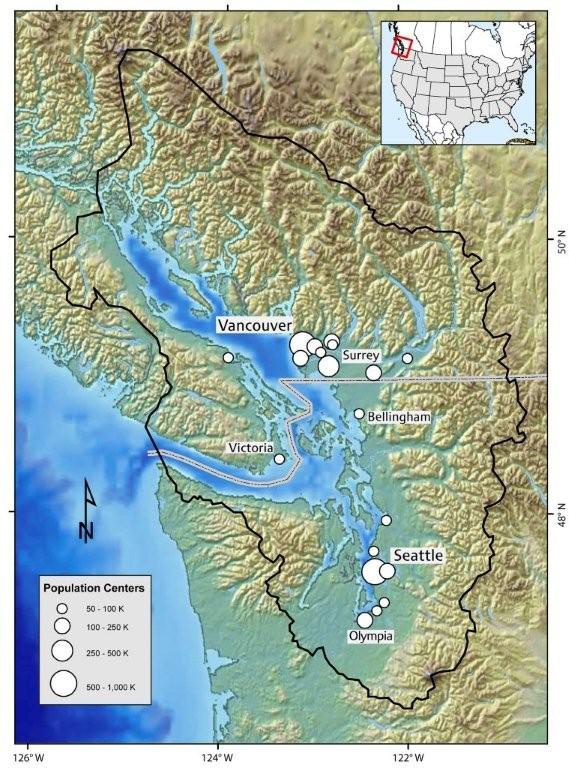 The Salish Sea is a 17,000 sq. km. ecosystem consisting of the Puget Sound Basin (in the US) and the Georgia Basin (in Canada). Efforts to heal the Salish Sea depend upon good cross-border collaboration. Map: N. Maher
The Salish Sea is a 17,000 sq. km. ecosystem consisting of the Puget Sound Basin (in the US) and the Georgia Basin (in Canada). Efforts to heal the Salish Sea depend upon good cross-border collaboration. Map: N. Maher
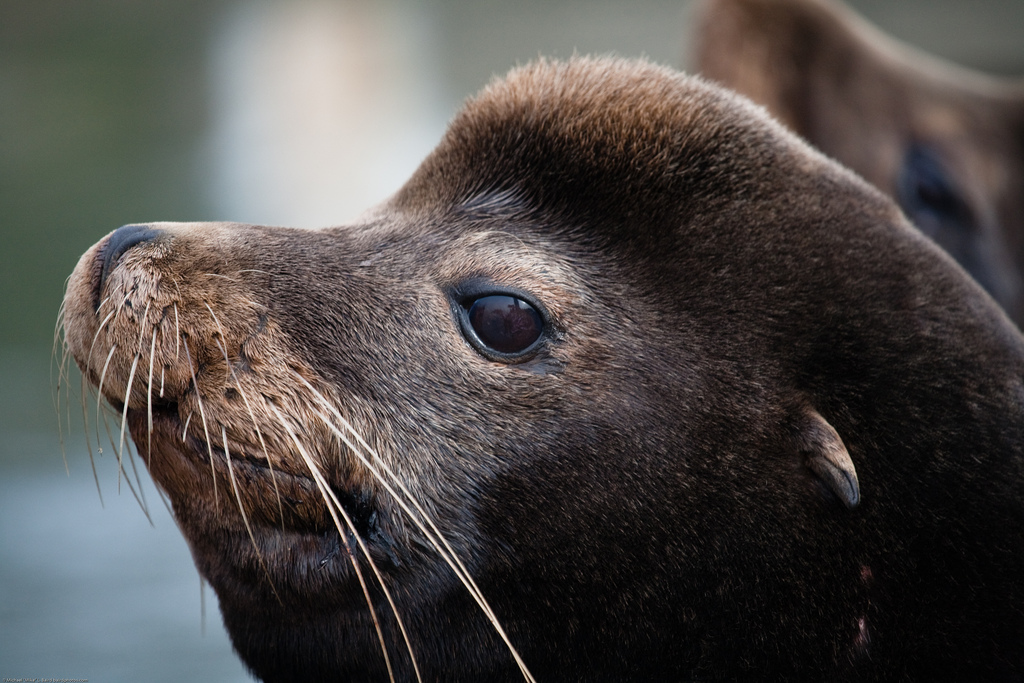 At the 2014 North American Veterinary Conference, in Orlando, Florida, Joe Gaydos presented on Salmonella in wildlife. About 10% of the Salmonella outbreaks between 2006 and 2013 were caused by wild animals, and most of these were caused by reptiles and amphibians.
At the 2014 North American Veterinary Conference, in Orlando, Florida, Joe Gaydos presented on Salmonella in wildlife. About 10% of the Salmonella outbreaks between 2006 and 2013 were caused by wild animals, and most of these were caused by reptiles and amphibians. 
 At the 2014 North American Veterinary Conference, held in Orlando, Florida, Joe Gaydos presented a paper on diseases in river otters.
At the 2014 North American Veterinary Conference, held in Orlando, Florida, Joe Gaydos presented a paper on diseases in river otters. 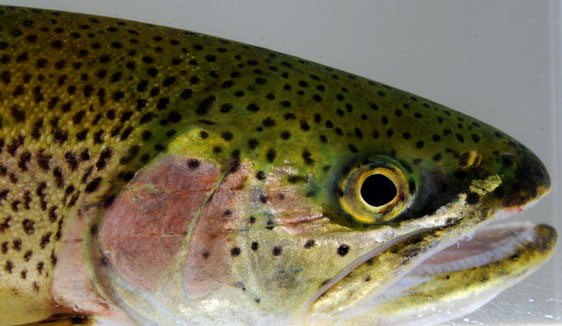 Coastal or sea-run cutthroat trout are freshwater fish that also move into the marine waters to feed and are an important recreational fishery in many parts of the Salish Sea.
Many people don't think of the San Juan Islands when they think of cutthroat trout, but they were historically caught in the area. Long-standing residents recall a time when these rare fish were much more abundant. While recent work documented cutthroat trout in some streams in the San Juan archipelago, little is known about the current status of coastal cutthroat trout in this area.
Coastal or sea-run cutthroat trout are freshwater fish that also move into the marine waters to feed and are an important recreational fishery in many parts of the Salish Sea.
Many people don't think of the San Juan Islands when they think of cutthroat trout, but they were historically caught in the area. Long-standing residents recall a time when these rare fish were much more abundant. While recent work documented cutthroat trout in some streams in the San Juan archipelago, little is known about the current status of coastal cutthroat trout in this area. Blue herons hunting for fish, bald eagles swooping on seabirds, river otters diving for crabs: links between animals and the ocean are common in the Pacific Northwest. These dependencies go much deeper than previously thought.
Blue herons hunting for fish, bald eagles swooping on seabirds, river otters diving for crabs: links between animals and the ocean are common in the Pacific Northwest. These dependencies go much deeper than previously thought.
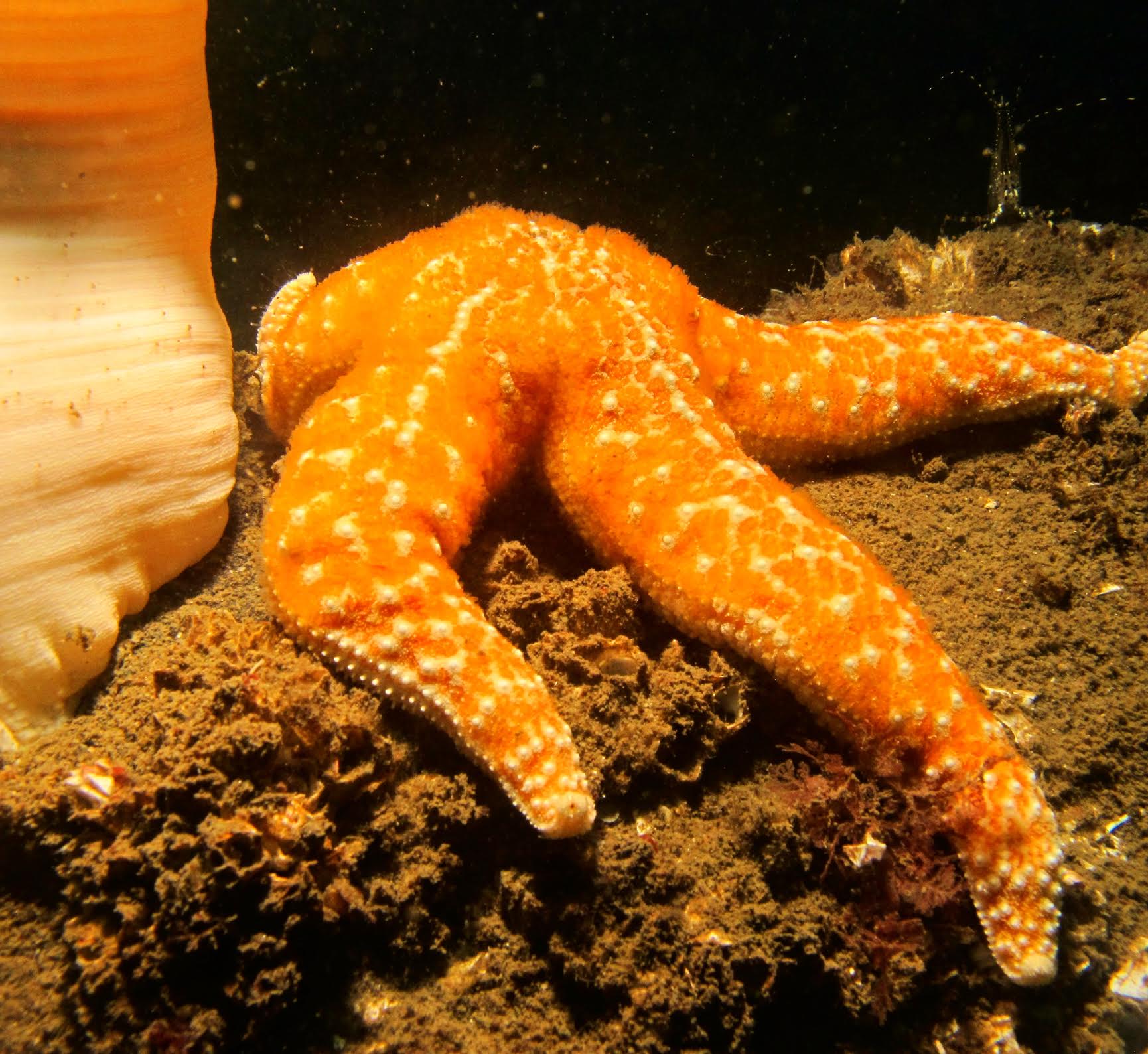


 October 2013: NOAA Fisheries is removing the eastern Distinct Population Segment of Steller sea lions from the list of threatened species, because it has met its recovery criteria as outlined in the 2008 Steller Sea Lion Recovery Plan and no longer meets the definition of a threatened species under the Endangered Species Act (ESA). This makes the eastern population of Steller sea lions the first species NOAA has delisted due to recovery since 1994, when the eastern North Pacific gray whale was taken off the list of threatened and endangered species.
Read more:
October 2013: NOAA Fisheries is removing the eastern Distinct Population Segment of Steller sea lions from the list of threatened species, because it has met its recovery criteria as outlined in the 2008 Steller Sea Lion Recovery Plan and no longer meets the definition of a threatened species under the Endangered Species Act (ESA). This makes the eastern population of Steller sea lions the first species NOAA has delisted due to recovery since 1994, when the eastern North Pacific gray whale was taken off the list of threatened and endangered species.
Read more: 
